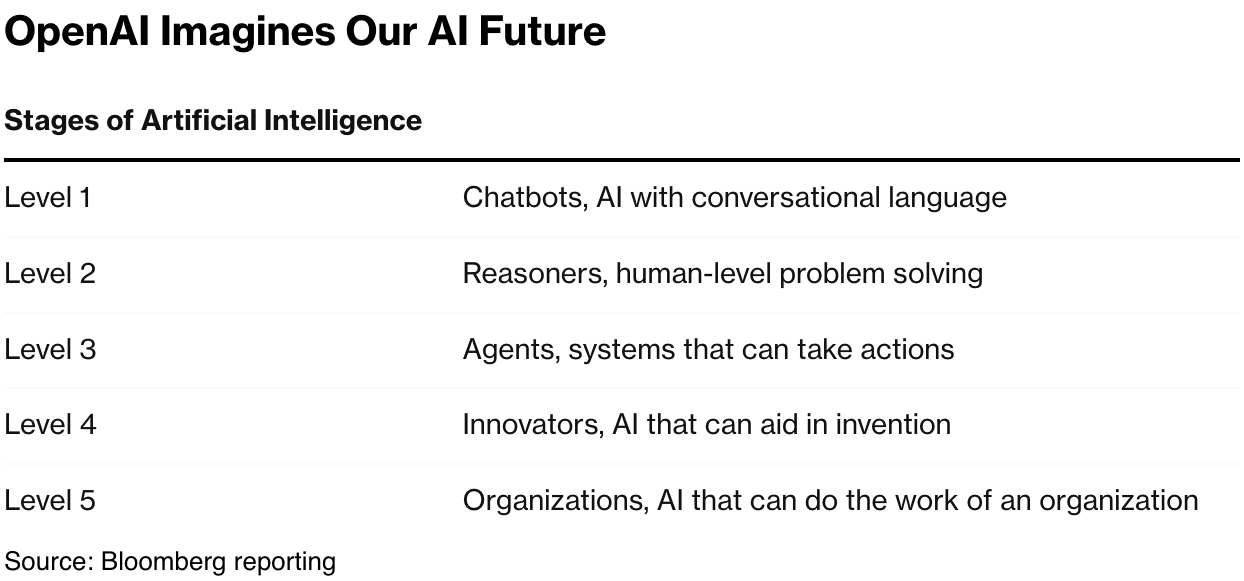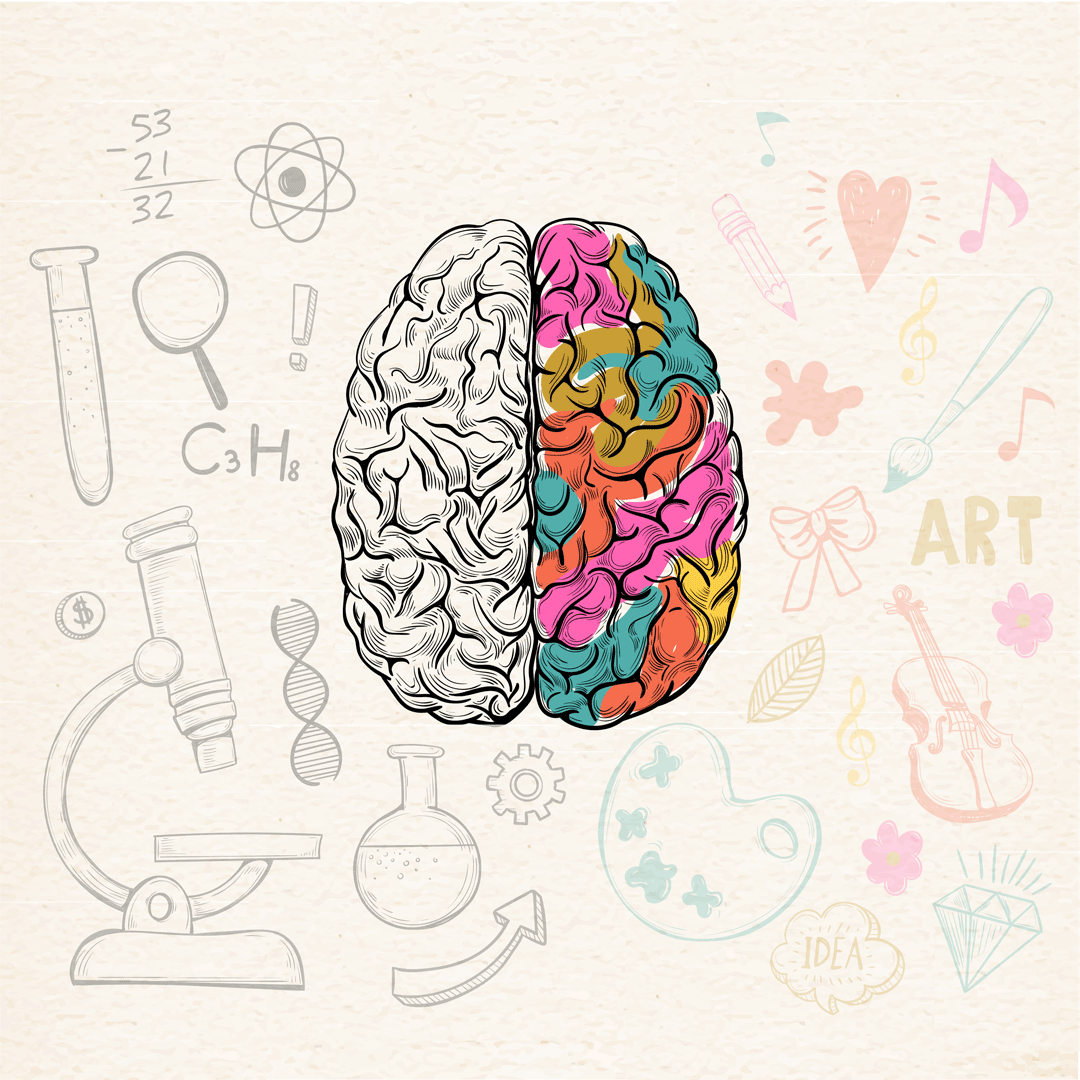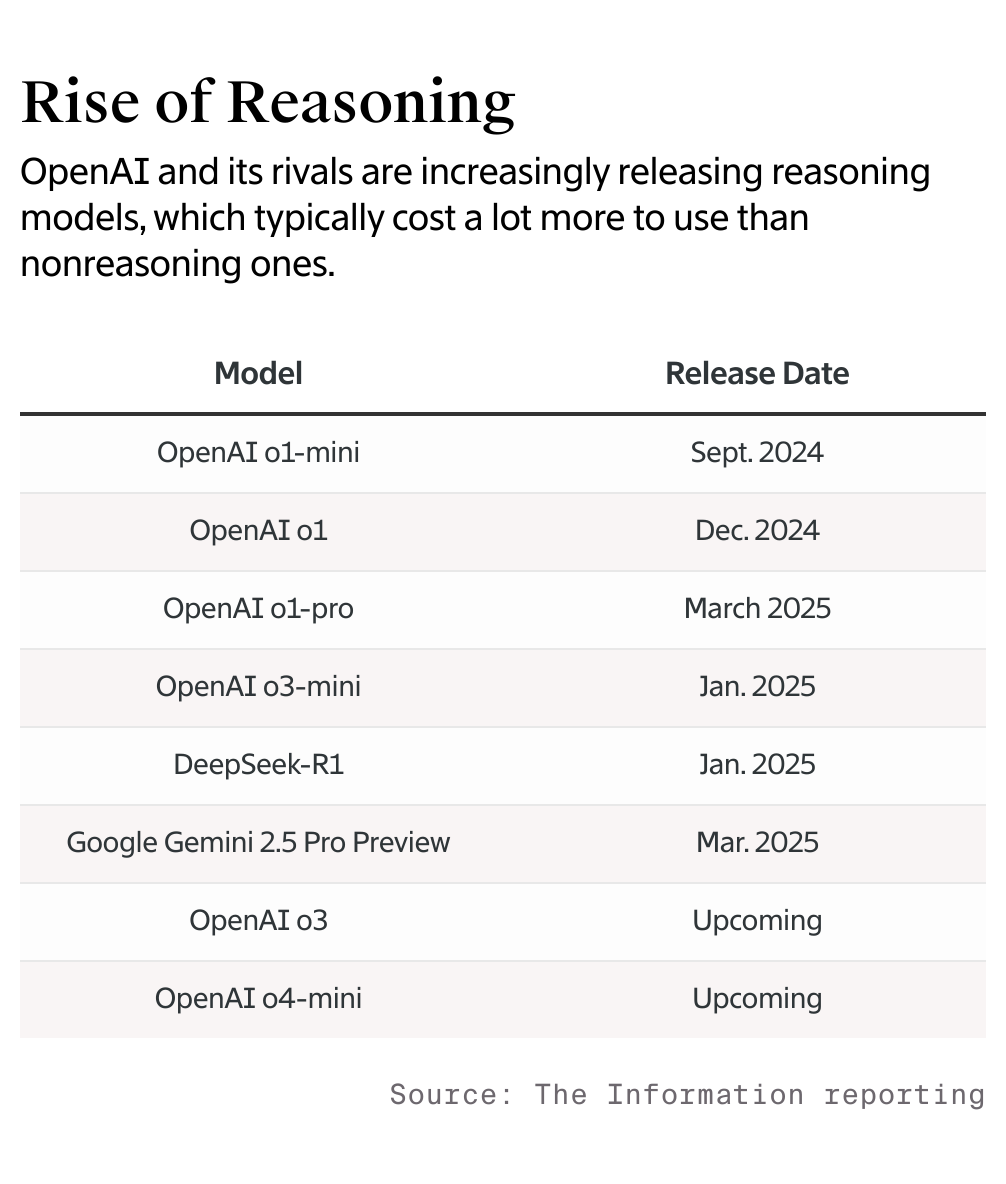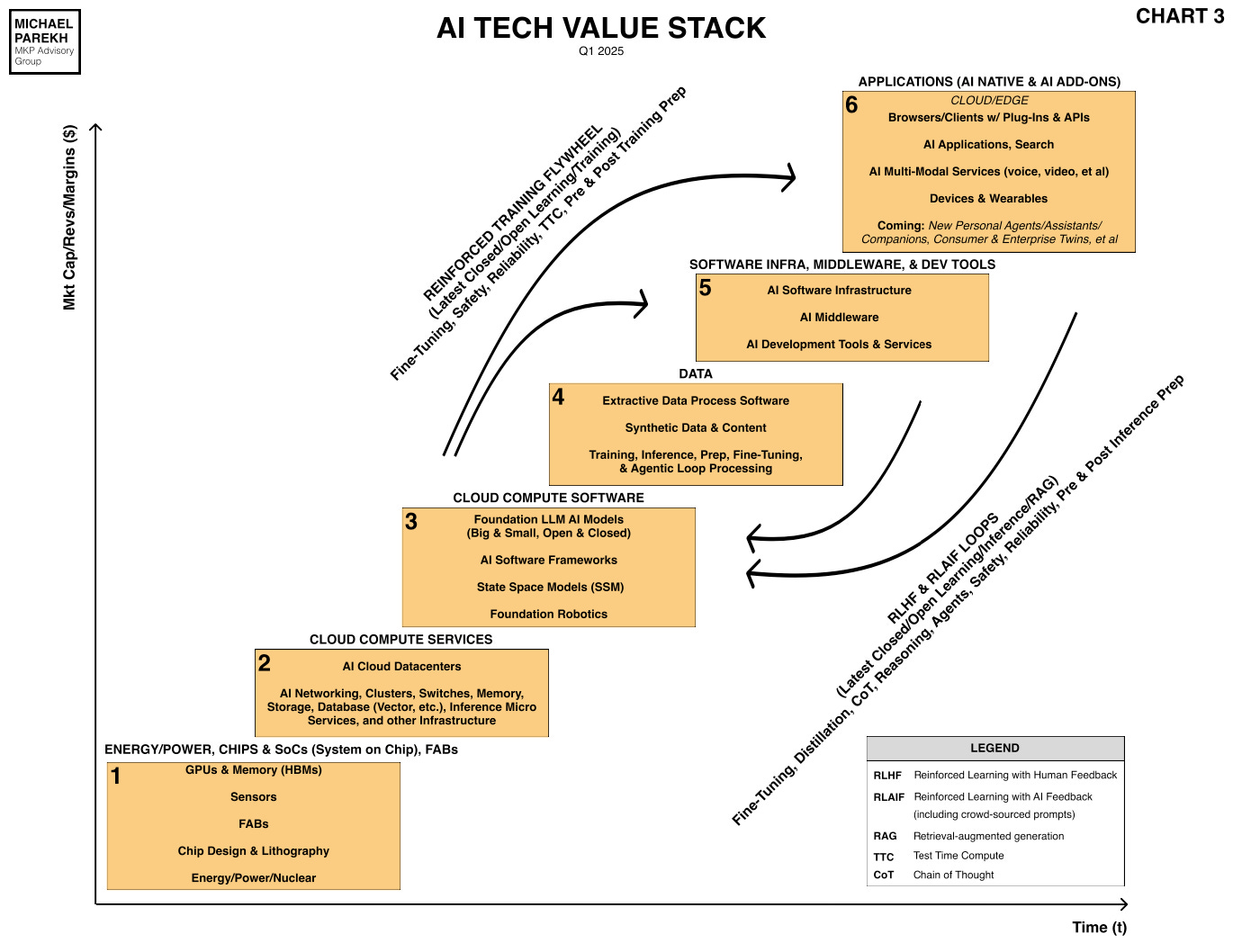
AI: On the threshold of 'New' AI 'thinking'. RTZ #690
OpenAI outlined their roadmap to artificial general intelligence (AGI) last year with ‘5 levels’ and an undefined time line measured in years (see chart below).
Starting with Chatbots like OpenAI ChatGPT as Level 1, to AI reasoning as Level 2, AI Agents at Level 3, from now for the next 2-3 years. Then rapidly into Level 4 ‘AI Innovation’ and Level 5 ‘AI Organizations’ some time in the future. Presumably at or beyond the thresholds of artificial AGI.
Other LLM AI companies like Google, Anthropic and others are following roughly the same roadmap on this AI Tech Wave, outlined above.
Now, OpenAI is adding to the flurry of its recent spate of AI innovations and products, with beginning stakes in the ground on AI innovation.
It started with hints by founder/CEO Sam Altman that its latest AI products were being tuned and tweaked for more creative tasks, bridging the ‘right brain-left brain’ models generally used for how human brains work, bridging rational and emotional thinking.
Now it goes a step further.
As the Information lays it out in “OpenAI’s Latest Breakthrough: AI That Comes Up With New Ideas”:
“Even as artificial intelligence has made strides in summarizing research papers or solving mathematical problems, professionals in many fields still believed humans would be in charge of coming up with ideas for new discoveries.
“Now AI is getting good at such brainstorming, too.”
“OpenAI is preparing to launch new AI models as soon as this week that can connect the dots between concepts from different fields to suggest new types of experiments involving anything from nuclear fusion to pathogen detection, according to three people who have tested the models but are not authorized to speak about it.”
There are big expectations:
“If the upcoming models, dubbed o3 and o4-mini, perform the way their early testers say they do, the technology might soon come up with novel ideas for AI customers on how to tackle problems such as designing or discovering new types of materials or drugs. That could attract Fortune 500 customers, such as oil and gas companies and commercial drug developers, in addition to research lab scientists.”
“The apparent improvements highlight the benefits of AI models focused on reasoning, which the ChatGPT maker debuted in September. Reasoning models perform better the more time they can spend processing answers, and they excel in problems with solutions that can be verified objectively, such as math theorems. OpenAI last year shifted its research effort to reasoning as traditional methods of improving AI slowed.”
This line of progression also comes with bigger expectations on pricing AI at higher tiers, a subject I’ve discussed at length. And a subject important due to the high variable cost of ever rising costs of AI compute. Also discussed in detail.
“The progress of such software helps explain why OpenAI believes it could eventually charge upward of $20,000 per month, or 1,000 times the cost of a basic ChatGPT subscription, for AI that can replicate the work of doctorate-level researchers.”
“The ability of OpenAI’s upcoming models to synthesize new ideas represents one of several pillars the firm is developing to match or outperform humans at “most economically valuable work,” otherwise known as artificial general intelligence.”
The price levels are potentially elastic with rising capabilities horizontally and vertically, and compute costs:
“OpenAI says it has trained its reasoning models to include a large base of knowledge across multiple domains, such as biology, physics and various types of engineering.”
“What makes the soon-to-be-released reasoning models unique is that they can compute an answer or suggest an idea using information from multiple fields—physics and engineering, for instance—simultaneously, two of the people who tested the models said. Most scientists, in contrast, must collaborate with experts from other fields to come up with similar answers or ideas, these people said. That’s a time-consuming process.”
For now these capabilities stretch the spectrum of level 2 AI Reasoning, on their way to level 3, AI Agents. By AI companies here and from China:
OpenAI has been building and testing these capabilities out in bits and spurts:
“OpenAI’s newer reasoning models aren’t available for purchase yet but are already powering features in ChatGPT such as deep research, which browses the web to compile research reports.”
“With that technology, scientists can direct the AI to read publicly available literature in various scientific domains, summarize the experiments researchers have already conducted and suggest new approaches that haven’t been tried yet, said a person who has tested them. (An OpenAI spokesperson did not have a comment for this article.)”
“What highlights the potential of the new reasoning models is the fact that even the less-advanced reasoning models already available have been a game-changer for scientists.”
And these products have applications of course in the world of ‘Physical AI’, spanning AI robots, cars/EVs, drones and beyond.
“Combining reasoning models that can suggest hypotheses with AI agents that can access simulators or robots to test them would be key to accelerating new discoveries, scientists say.”
OpenAI has taken baby steps towards these capabilities with recent releases:
“OpenAI has publicly released Operator, a computer- and browser-using agent, which still makes mistakes and struggles when navigating complex sites, some users say.”
“To improve Operator, OpenAI plans to collect data from the people who use it, filter out examples where the agent fails to complete the task and train the agent on the remaining examples, according to a person who has worked on the product.”
“This process, known as reinforcement learning from human feedback, is a bedrock of how OpenAI and other firms improve AI to learn tasks beyond the data used to train it.”
All this leads to the ‘trifurcation’ of AI Scaling discussed here.
And these capabilities are likely to be delivered via new mechanisms like ‘AI browsers”:
“Allowing agents to “play” and try different approaches in an environment such as a browser and rewarding them when they complete a task can help them learn new skills, he said.”
“OpenAI, for its part, has been developing an advanced software coding agent it hopes can eventually automate the work of AI researchers and engineers, including generating code for their experiments related to AI models.”
So big implications for Science, Businesses of all types, and all manner of Applications and Services in the ‘Holy Grail’ Box 6 of the AI Tech Stack below.
The whole piece is worth reading for additional examples across verticals.
And OpenAI is not alone in pursuing these new objectives on the AI roadmap. Both in the US and China. Lot more ahead in this AI Tech Wave.
Despite the self-imposed headwinds of Tariffs and Geopolitical Tussles. Stay tuned.
(NOTE: The discussions here are for information purposes only, and not meant as investment advice at any time. Thanks for joining us here)












